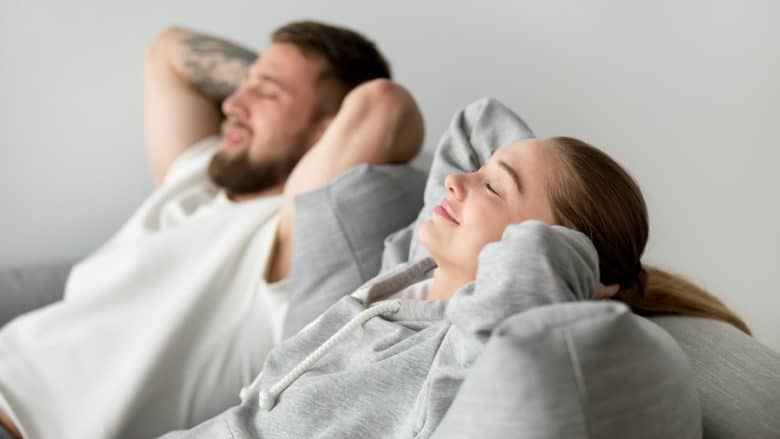
Are you sick and tired of stress? Learning relaxation techniques to elicit the relaxation response is one of the most important things you can do for your health and your life!
Here are just a few its many benefits.
Relaxation Response Benefits
Stress kills. It contributes to violence, chronic illnesses,
and hampers your immune system.
Relaxation counteracts the damaging effects of stress and enhances your sense of well being.
They quiet your mind so you can think better and make better choices; they lower your blood pressure, enhance your immune system, and have a host of other healthful benefits that help natural healing.
How to Elicit the Relaxation Response
Relaxation is “letting go” physically, mentally, and emotionally:
- Physically, releasing muscles from habitual unconscious tension;
- Mentally, observing and letting go of troubling, worry provoking thoughts; and
- Emotionally, letting go of negative emotions like anger and resentment, as well as enjoying positive emotions like gratitude and love.
All relaxation methods have two simple components:
- Focusing your attention through the repetition of a physical activity, image, sound, word, affirmation, or prayer, and
- Passive letting go of or disregarding of thoughts.
Think of a time when you felt really relaxed and “good”…
- What images arise?
- Are there sounds?
- Are you engaged in a physical activity?
- Is there a sensation involved, like feeling the warmth of the sun on your skin?
- Is there a smell, like the smell of spring flowers, or the fresh ocean air?
Notice your breathing as you recall this relaxed state.
Take a few moments to focus on your breathing.
Really being aware of the feeling of the air moving in through your nose and into your lungs, feeling the air as it leaves your body.
Feel the new breath as it comes in through your nose. If thoughts distract you, passively let them go, just redirect your attention to noticing your breathing…
You may have experienced the relaxation response through following these simple instructions.
You may have focused your attention and let go of your day-to-day thoughts as you focused on your breathing.
Types of Relaxation Techniques
Here are definitions of some of the most popular relaxation techniques.
Progressive Muscle Relaxation involves tensing and relaxing muscle groups. This process helps you become aware of subtle degrees of muscle tension. Once aware of the tension you learn how to relax the muscles.
Body Scan helps you gain awareness of areas of tension. You then release the tension while focusing on your breathing to experience relaxation.
Visualization and Guided Imagery utilizes your imagination and your senses to help you relax.
Autogenic Training helps you relax by teaching exercises that focus on feelings of heaviness and warmth in your arms and legs combined with a passive focus on breathing.
Affirmations are short positive statements that have meaning to you. They help create new thought patterns in your brain. These new positive thought patterns become easier and easier to recall, while the old stress producing thought patterns disappear.
Relaxation Minis are quick easy ways to relax. You can use relaxation minis once you master the relaxation response.
How to Choose Techniques
You may find that you prefer certain methods of relaxation. In the early 1970’s information scientist Richard Bandler and linguistic professor John Grinder found that people use different representational systems. Some prefer visual (seeing), others hearing (auditory), and others feeling or touching (kinesthetic).
Notice as you use the scripts of the following articles (coming soon) which method is easiest and most natural for you. For example, if you are primarily kinesthetic you may prefer autogenic training or progressive muscle relaxation. If you are primarily visual, you may enjoy guided imagery relaxation best.
Each of these techniques is time-tested and evidence-based so simply choose the one you prefer. You really can’t choose a “wrong” one. Now, let’s look at how to get the most out of your relaxation time with these tips.
Relaxation Techniques Tips
- Set aside 20 minutes that is just for you. Let others know not to disturb you.
- Choose a quiet, private place.
- Loosen or remove belts and restrictive clothing. Take off your shoes.
- Use a sitting position with your back straight and both feet flat on the floor or sit “yoga” style. It’s OK to lay down if sitting is hard for you, but notice if you have problems falling asleep and adjust accordingly.
- Turn on your favorite music or CD, or have a friend read one of the relaxation techniques script.
- Interruptions happen, even with the best preparation. The phone may ring; you may hear noises you didn’t notice before. Let the phone ring, let the noise be noise and focus on your relaxation. Passively, let the disturbing or intrusive sounds or thoughts go.
- When finishing the exercise take a deep breath and say an anchoring word or phrase to yourself like: “breathe,” “be well,” “relax,” or “OK.”Anchoring words or phrases are like touch stones. Over time, you will be able to elicit the relaxation response by simply recalling the anchoring word or phrase.
Learning relaxation techniques may seem like learning to drive within the speed limit when you’re used to passing every car on the road. The important thing is to begin a regular practice.
Protect your relaxation time. Treat it at least as important as a required meeting or a special TV show. Many find the early morning a good time. It’s worth getting up 20 minutes earlier if need be.
Be kind and gentle with yourself, start slow, even a few minutes count. There are many books, CDs, DVDs, videos, and tools like the emWave Personal Stress Reliever available to help you get started.
Enjoy relaxation techniques. “Be well.” “Relax.”
